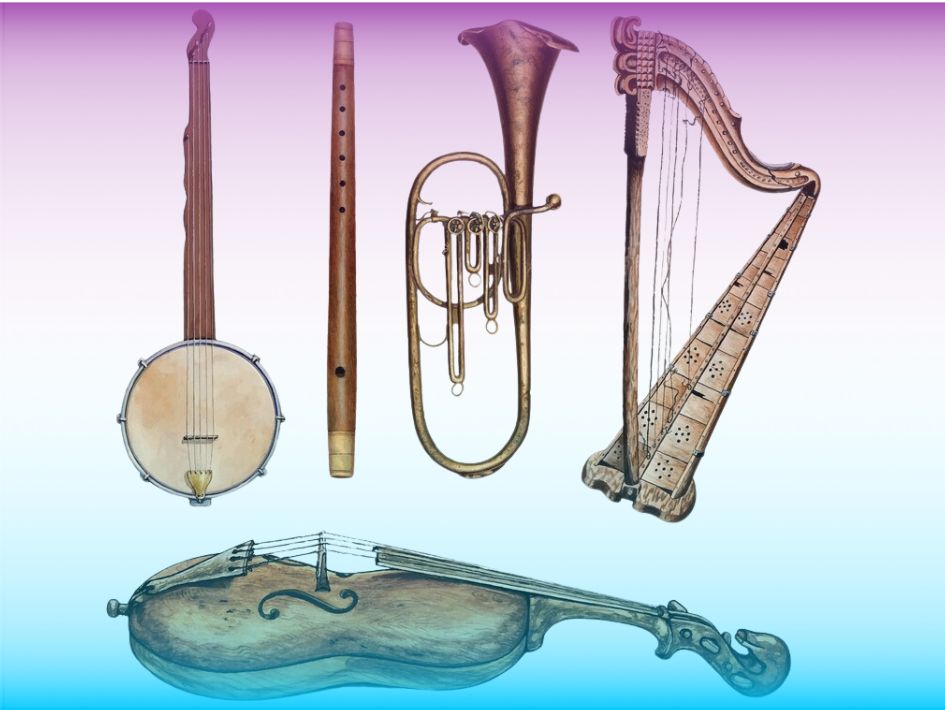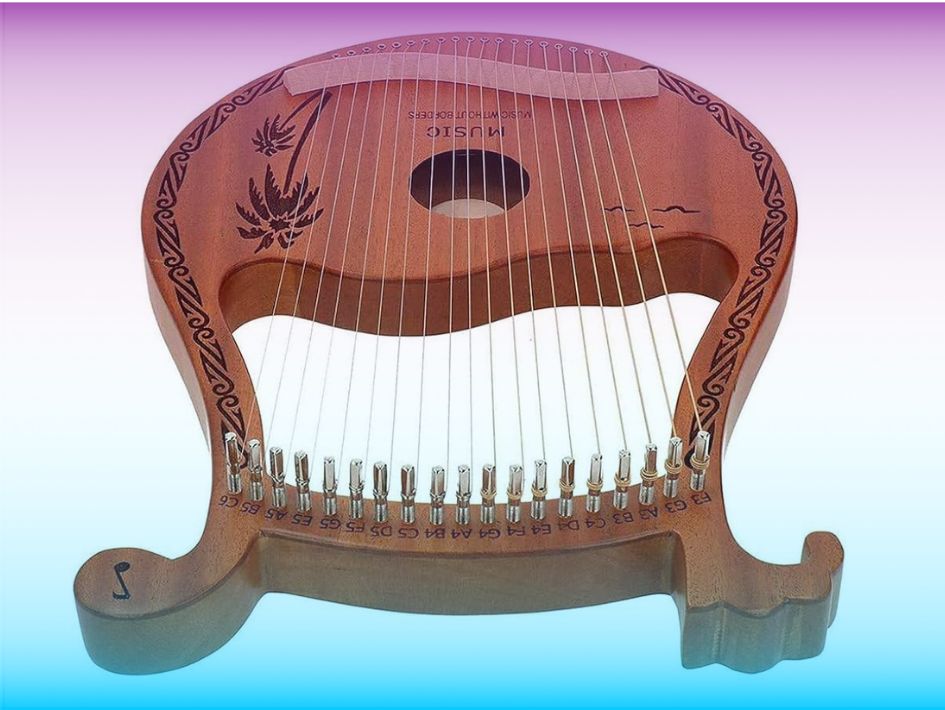Music has been part of human culture for thousands of years, and some of the oldest musical instruments are still in use today. Ancient instruments, like drums, flutes, and string instruments, have shaped the music we hear in the modern world. These instruments tell stories about early human societies, their beliefs, and their creativity.
Even though many of these instruments are from thousands of years ago, they still influence how we create and enjoy music. So, how have the world's oldest instruments impacted music in today's world? Let's explore the history of music and the legacy of these ancient instruments!
The World's Oldest Musical Instruments and Their Impact Today
1. The Flute: A Voice from Ancient Times
Music is a language understood by all, and the different types of instruments spread across the globe enrich it even further.
Rare musical instruments are new ways to consider familiar sounds and their stories of how music can link people through time.
The realm of music is so expansive, and delving into these strange instruments is an excellent way of expanding one's grasp of the art form. Whether a musician or an avid listener, there's always something to be found in rare and unique instruments.
Impact Today: The modern flutes were made from wood, silver, and gold. Its design and sound are still very close to the ancient bone flute. The flute is integral in orchestras today, bands, and solo performances.
The light and airy tone would apply to classical, jazz, and pop. It tells how such an ancient instrument can be timeless. The finger holes and musical scales on the flute show that it laid a foundation for today's music.
2. The Drum: The Heartbeat of Music
Drums are arguably the oldest percussion instruments in the world. The early drums were made by merely hollowing out trees or stretching animal skins over frames. Drumming was used ritually and ceremonially 6,000 years ago in ancient Mesopotamian, Chinese, and African civilizations. Ancient cultures usually believed that drums possessed magical powers. They used them to send messages to gods or spirits.
Impact Today: Drums are in almost every music genre, from rock to hip-hop to classical. The modern drum kit, made up of bass drums, snare drums, and cymbals, is a staple of pop and rock bands. Ancient drums still influence today's music. Their powerful rhythms show how vital rhythm is to human culture.
3. The Harp: Strings Through History
The harp is another ancient string instrument with roots that stretch back thousands of years. Early harps from animal gut and wood were used in ancient Egypt around 3,000 BCE. Over the years,
the harp evolved, with its design becoming more intricate. The harp has been found in many ancient cultures, including in Mesopotamia, Greece, and Europe.
Impact Today: Modern harps are much larger and are created from metal and nylon strings. Harps are used in orchestras and solo performances, especially in
classical music. The sound of the harp is known for its ethereal, angelic quality. Its ancient origins can still be felt in how it is played today, making it one of the most elegant and timeless instruments.
4. The Lyre: A Stringed Storyteller
The lyre is a stringed musical instrument from circa 2,000 BCE and used in ancient Greece, Mesopotamia, and Egypt. Generally, lyres are made from wood and animal gut, played by plucking strings. The lyre is deeply associated with poetry and storytelling in ancient culture. In ancient Greece, a bard played the lyre to accompany his epic poems.
Impact Today: The lyre is no longer used, yet it may be found within modern string instruments like the guitar and the harp. Indeed, the guitar is much like a lyre; it has a similar shape, and both are played with strings. The lyre's association with music and stories has inspired musicians nowadays who use a stringed instrument as a medium for melody and lyrics.
5. The Sitar: Ancient Strings with a Modern Twist
The sitar is an ancient string instrument from India that has existed for over 2,000 years. It's a sizeable stringed instrument with a unique, resonant sound. The sitar became famous in the 1960s. Musicians like George Harrison of The Beatles introduced it to Western audiences. The sitar is used in Indian classical music. It is known for its complex sound. This is due to sympathetic strings that vibrate with the main strings.
Impact Today: The sitar has had a lasting impact on Western music, especially in fusion and world music. The Beatles used it in their rock music. It added a unique texture to 1960s music. Today, musicians use it to blend Eastern music and cultural elements with Western music. The sitar is a symbol of originating and intricacy in both ancient and modern musical traditions.
6. The Didgeridoo: The Sound of Australia's Past
The didgeridoo is an ancient wind instrument originating in Australia, traditionally made from a tree branch hollowed out. The Indigenous Australians have used it for more than 1,500 years, principally in ceremonial and spiritual contexts. It produces a deep, droning sound that has become iconic in traditional and contemporary music. Early instruments were often decorated with culturally significant symbols and designs.
Impact Today: The didgeridoo's unique sound has influenced modern experimental music; it is also used in several genres and has found its place within popular music. The didgeridoo is a symbol of the culture of Indigenous Australians. Its sounds inspire artists and musicians around the world.
7. The Shofar: The Call to Prayer
The Shofar is an ancient instrument created from the horn of a ram or other animal and has been used in Jewish religious ceremonies for over 3,000 years. The sound of the Shofar is loud and piercing and is used to mark important events or signal moments of reflection and prayer. It is often blown during the Jewish New Year, Rosh Hashanah, and at the edge of the Day of Atonement, known as Yom Kippur.
Impact Today: The Shofar is primarily a religious instrument. Its sound, however, is in modern music, predominantly contemporary Christian and Jewish worship. The Shofar continues to carry this ancient, powerful sound to symbolize reverence and connection with the past. Some modern works that use the sound of a shofar are found in film scores and pop music. This adds a certain cultural profundity and emotion.
Summary
The oldest musical instruments are more than just tools for making sound—they are windows into the past. Instruments like the flute, drum, harp, and lyre have been around for thousands of years, influencing music worldwide. The haunting sounds of the didgeridoo and the Shofar's powerful call are ancient. They still shape the music we enjoy today.
They show us how music has been a part of human culture for centuries and connects us to traditions that are still alive today. Ancient civilizations were ingenious musical scales, finger holes, and created string and percussion instruments even in the Paleolithic, early homo sapiens. This created social networks that transcended time and culture.
Learn More!
Are you interested in exploring musical instruments with rich, ancient histories? Visit
Muzeg™ for a wide selection of unique instruments from around the world. Whether you're a beginner or an experienced musician, Muzeg offers instruments that will help you discover the timeless sounds of ancient music and bring them to life in your music. Start exploring now and find the perfect instrument for your next musical adventure!
Honoring the Past, Shaping the Future
The world's oldest musical instruments have shaped the soundscape of today's music. They've survived thousands of years of change, evolving in form and function but never losing their connection to human creativity and culture.
Whether it's the delicate tones of the ancient flute or the booming beats of the drum, these instruments remind us of music's universal power to tell stories, express emotions, and bring people together. By learning about and playing these ancient instruments, we can honor the past while creating new sounds for the future.


